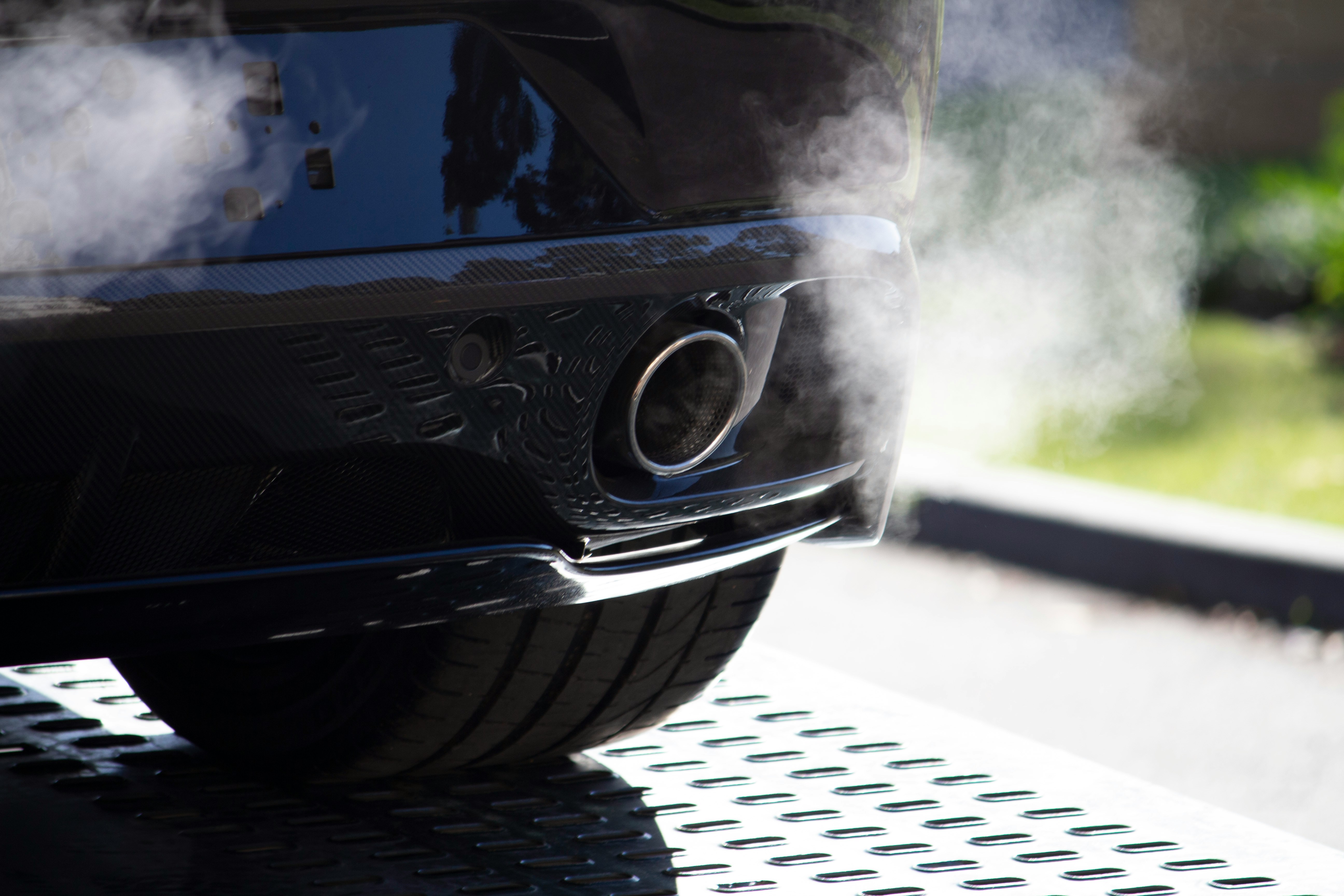Vehicle exhaust smoke provides valuable diagnostic information that can help drivers identify potential engine problems before they become costly repairs. Understanding car exhaust smoke colors enables vehicle owners to recognize warning signs and take appropriate action to protect their automotive investment while maintaining safe, reliable transportation.
The Science Behind Exhaust Smoke
Car exhaust smoke colors result from various combustion byproducts and system malfunctions that affect how fuel burns within the engine and what substances exit through the exhaust system. Different colors indicate different problems, making visual exhaust analysis a valuable diagnostic tool for vehicle owners and mechanics alike.
Normal engine operation should produce minimal visible exhaust, with most modern vehicles producing nearly invisible emissions under proper operating conditions. When car exhaust smoke colors become visible, they indicate that something in the combustion process or related systems is not functioning correctly.
Understanding the relationship between car exhaust smoke colors and engine problems helps drivers make informed decisions about when to seek professional diagnosis and repair services, potentially preventing minor issues from developing into major engine damage.
Temperature, humidity, and operating conditions can affect the visibility of exhaust emissions, so drivers should consider environmental factors when evaluating car exhaust smoke colors and determining whether professional attention is needed.
White Exhaust Smoke: Causes and Implications
Normal White Smoke vs. Problem Indicators
White exhaust smoke can range from normal condensation to serious engine problems, making it essential to understand the differences between various types of white smoke and their implications for engine health and vehicle safety.
Light white smoke during startup, particularly in cold weather, often represents normal condensation that forms when hot exhaust gases encounter cooler exhaust system components. This type of white smoke typically dissipates quickly as the engine warms up and is generally not cause for concern.
Thick, persistent white smoke indicates more serious problems, often related to coolant entering the combustion chamber through damaged head gaskets, cracked cylinder heads, or other cooling system breaches. This type of car exhaust smoke colors requires immediate professional attention.
Sweet-smelling white smoke often indicates coolant burning in the combustion chamber, which can cause severe engine damage if not addressed promptly. The sweet smell comes from ethylene glycol in the coolant and represents a serious warning sign that requires immediate diagnosis.
Coolant-Related White Smoke Issues
Coolant entering the combustion chamber creates distinctive white smoke that indicates potentially catastrophic engine problems requiring immediate attention to prevent complete engine failure and expensive repairs.
Head gasket failure represents one of the most common causes of coolant-related white smoke, with damaged gaskets allowing coolant to leak into combustion chambers where it burns and creates thick white smoke. Head gasket repairs can be expensive but are necessary to prevent engine destruction.
Cracked cylinder heads can also allow coolant into combustion chambers, creating similar white smoke symptoms. Cylinder head problems often result from overheating and may require extensive repairs or complete engine rebuilding.
Intake manifold gasket failures can create similar symptoms by allowing coolant into the engine, though these repairs are typically less expensive than head gasket or cylinder head problems. Early diagnosis and repair can prevent more serious damage.
Blue Exhaust Smoke: Oil Consumption Issues
Understanding Blue Smoke Causes
Blue exhaust smoke indicates oil burning in the combustion chamber, which can result from various engine wear issues, seal failures, or maintenance problems that require diagnosis and repair to prevent further engine damage and excessive oil consumption.
Worn piston rings allow oil from the crankcase to enter combustion chambers during the compression and combustion process, creating blue smoke that becomes more pronounced under acceleration or heavy load conditions.
Valve guide wear and valve seal failure permit oil to leak past valves into combustion chambers, creating blue smoke that may be more noticeable during startup or deceleration when manifold vacuum pulls oil past worn seals.
PCV system malfunctions can create excessive crankcase pressure that forces oil past seals and into the combustion process, creating blue smoke along with other symptoms such as oil leaks and rough engine operation.
Severity Assessment for Blue Smoke
Light occasional blue smoke may indicate minor seal wear or maintenance issues that can be addressed through preventive measures, while heavy persistent blue smoke suggests significant engine wear requiring major repairs or engine rebuilding.
Startup blue smoke that dissipates quickly often indicates valve seal problems that may be manageable in the short term but will eventually require repair to prevent oil consumption and engine damage.
Continuous blue smoke under all operating conditions suggests more serious problems such as worn piston rings or cylinder wear that typically require major engine work to correct permanently.
Oil consumption monitoring helps assess the severity of blue smoke issues, with excessive oil usage indicating more serious problems that require immediate attention to prevent catastrophic engine failure.
Black Exhaust Smoke: Fuel System Problems
Rich Fuel Mixture Indicators
Black exhaust smoke indicates incomplete fuel combustion resulting from overly rich fuel mixtures that waste fuel, reduce performance, and can damage emission control systems if not corrected promptly.
Fuel injector problems can cause excessive fuel delivery that creates rich mixtures and black smoke, particularly under acceleration or heavy load conditions. Dirty or malfunctioning injectors require cleaning or replacement to restore proper fuel delivery.
Air filter restriction limits airflow needed for proper combustion, creating rich mixtures that produce black smoke along with reduced power and fuel economy. Regular air filter replacement prevents these problems.
Fuel pressure regulation issues can cause excessive fuel pressure that leads to rich mixtures and black smoke. Fuel pressure regulators may fail and require replacement to restore proper fuel system operation.
Engine Management System Issues
Faulty sensors can provide incorrect information to engine management systems, causing improper fuel delivery that results in black smoke and poor engine performance. Oxygen sensors, mass airflow sensors, and throttle position sensors commonly cause these problems.
ECM programming problems or failures can cause incorrect fuel delivery calculations that result in rich mixtures and black smoke. Engine control module diagnosis requires specialized equipment and expertise.
Emission control system malfunctions can affect fuel delivery and combustion efficiency, creating black smoke along with other performance problems. These systems require professional diagnosis and repair to restore proper operation.
Turbocharger or supercharger problems in forced-induction engines can affect air-fuel ratios and create black smoke, particularly under boost conditions. These systems require specialized diagnosis and repair procedures.
Gray Exhaust Smoke: Multiple System Issues
Identifying Gray Smoke Causes
Gray exhaust smoke often indicates multiple system problems or transmission fluid burning, making diagnosis more complex and requiring comprehensive evaluation to identify and address all contributing factors.
Transmission fluid burning creates gray smoke with a distinctive burnt oil smell, often indicating transmission cooler leaks, faulty vacuum modulators, or other transmission-related problems that require immediate attention.
Engine oil burning combined with other combustion issues can create gray smoke that combines characteristics of blue and white smoke, indicating multiple problems that require comprehensive diagnosis and repair.
Fuel system and ignition system problems working together can create gray smoke along with poor performance, rough operation, and other symptoms that require systematic diagnosis to identify all contributing factors.
Complex Diagnostic Requirements
Gray smoke diagnosis often requires professional equipment and expertise to identify multiple contributing factors and develop comprehensive repair strategies that address all problems effectively.
Compression testing helps identify internal engine problems that contribute to gray smoke, with low compression indicating worn rings, valves, or other internal components requiring major repairs.
Leak-down testing provides detailed information about specific areas of compression loss, helping technicians identify whether problems are related to rings, valves, or gaskets.
Emission testing and analysis help identify specific combustion problems and system malfunctions that contribute to gray smoke, providing guidance for targeted repairs that address root causes.
When to Seek Professional Help
Immediate Attention Warning Signs
Certain car exhaust smoke colors and associated symptoms require immediate professional attention to prevent catastrophic engine damage, safety hazards, or complete vehicle breakdown that could leave drivers stranded.
Heavy white smoke with coolant loss indicates serious cooling system breaches that can cause engine overheating and complete failure within minutes of continued operation. These symptoms require immediate shutdown and professional diagnosis.
Continuous heavy blue smoke indicates severe oil consumption problems that can lead to engine seizure, fire hazards, and complete engine destruction if not addressed immediately.
Any smoke accompanied by engine overheating, unusual noises, or loss of power requires immediate professional attention to prevent further damage and ensure driver safety.
Smoke that increases in intensity or changes color during operation suggests rapidly developing problems that require immediate diagnosis to prevent catastrophic failures.
Diagnostic Service Benefits
Professional diagnosis provides accurate identification of car exhaust smoke colors causes, enabling targeted repairs that address root problems rather than symptoms alone. This approach prevents unnecessary repairs and ensures effective solutions.
Comprehensive system analysis evaluates all related systems to identify contributing factors and ensure that repairs address all aspects of smoke-related problems. This thorough approach prevents recurring issues and optimizes repair effectiveness.
Cost-effective repair strategies help customers prioritize repairs based on severity, safety, and budget considerations while ensuring that critical problems receive immediate attention.
Preventive maintenance recommendations help prevent future smoke problems through proper care, regular service, and early identification of developing issues that could cause expensive problems if ignored.Empty Paragraph
Conclusion: Protecting Your Vehicle Investment
Understanding car exhaust smoke colors provides valuable diagnostic information that helps vehicle owners identify problems early, make informed decisions about repairs, and protect their automotive investments through appropriate action and preventive care.
Regular maintenance, prompt attention to warning signs, and professional diagnosis when needed represent the most effective approach to managing car exhaust smoke colors issues and maintaining reliable, efficient vehicle operation.
Whether dealing with white smoke indicating cooling system problems, blue smoke suggesting oil consumption issues, or black smoke pointing to fuel system malfunctions, early identification and appropriate response help minimize repair costs while ensuring safe, reliable transportation.
Vehicle owners who understand car exhaust smoke colors and respond appropriately to warning signs protect their investments while maintaining safe, dependable transportation that serves their needs effectively and economically over the long term.



